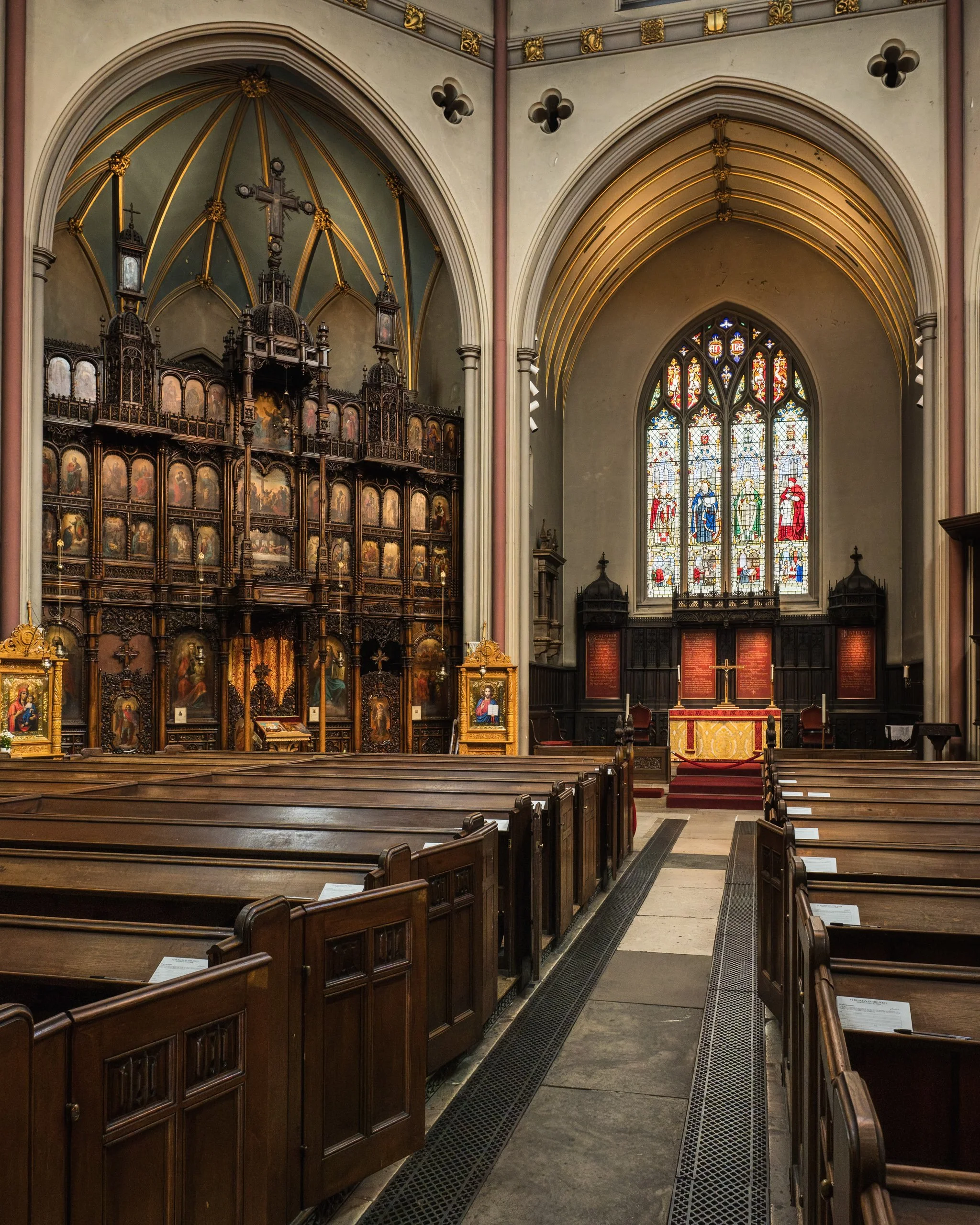Over a decade ago I started a project to photograph all the churches within the Square Mile of the City of London. Once upon a time there were over 100, but the Great Fire, a dwindling resident population, historical town planning and the Blitz have gradually whittled this number down. Yet even today over fifty remain and before Covid struck I’d visited about four fifths of these with my camera. After the pandemic many of the churches were slow to reopen so I’ve focused my photographic interests in other areas for the last five years.
Last week I decided the time had come to reboot my dormant project and I began with a revisit to St Dunstan in the West, in Fleet Street. Over the intervening years my skills and style have evolved so I fear this could become the photographic equivalent of painting the Forth Bridge, but I’m looking forward to improving upon some of my earlier efforts.
St Dunstan in the West is one of two churches with the same name, but St Dunstan in the East, near the Tower of London, remained an empty shell after being bombed during the Blitz and is now a beautiful garden space. Its western cousin is an unusual building. From Fleet Street it looks like a typical, rectangular City church, but when you head inside you find an octagon nave! Although an Anglican church, it shares its space with the Romanian Orthodox Church and London’s Romanian community. This is evident on one of the eight sides, which has an ornately carved wall, creating a private chapel, as you can see above. The three photos below show more details from this corner of the church.
Looking up at the beautiful vaulted ceiling, with the organ below.
The sword rest is a curiosity of most of the City Churches - intended as somewhere for the Lord Mayor to place his sword while at prayer.
The ornately carved pulpit, covered with angels and with a canopy above to help project the speaker’s voice to the congregation.
I found a moment when I had the church to myself to lie on the floor and take this photo!
Smaller details from around St Duntan’s.
Above and below - details and beautiful light among the pews. Each pew is equipped with a number of wooden pegs to hang one’s hat!
Photos taken 28 June 2025





































































